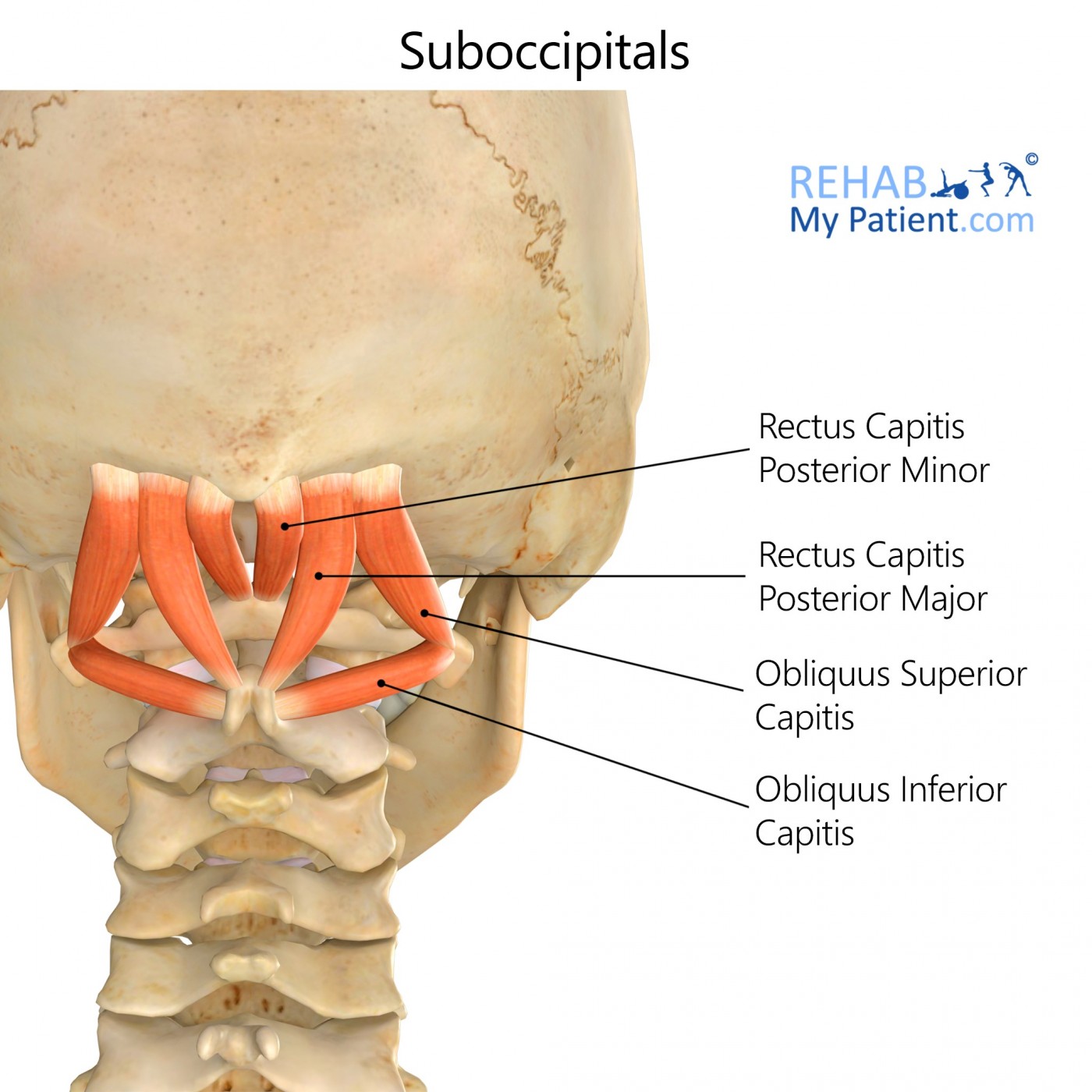
General information
The suboccipitals are a muscle compartment, situated inferiorly to the external occipital protuberance and the inferior nuchal line. The muscles are a pyramidal shape and is made up of four small muscles found in pairs: rectus capitis posterior major, rectus capitis posterior minor, obliquus capitis inferior and obliquus capitis superior.
Literal meaning
Below the back of the head.
Interesting information
Three of the four suboccipitals muscles form the boundaries of the suboccipital triangle: rectus capitis posterior major, obliquus capitis inferior and obliquus capitis superior. This triangle is in the posterior neck and houses the vertebral artery and the dorsal ramus of the suboccipital nerve.
The superomedial and superolateral boundaries of the triangle are formed by the rectus capitis posterior major and obliquus capitis superior. While the inferolateral boundary is formed by the obliquus capitis inferior. The roof is made up by the semispinalis capitis muscle and the floor is made up of the posterior atlanto-occipital membrane and the atlas’ posterior arch.
Origin
Rectus capitis posterior major - the spinous process of the axis.
Rectus capitis posterior minor – the posterior tubercle of the posterior arch of the atlas.
Obliquus capitis inferior – the posterior tubercle of the posterior arch of the axis.
Obliquus capitis superior – the transverse process of the atlas.
Insertion
Rectus capitis posterior major - the occipital bone at the lateral part of the inferior nuchal line.
Rectus capitis posterior minor – the inferior nuchal line on the occipital bone but at the lateral part.
Obliquus capitis inferior – the transverse process of the atlas on the inferoposterior part.
Obliquus capitis superior – between the superior and inferior nuchal lines, on the occipital bone, laterally to semispinalis capitis.
Function
Maintain posture and produce movements of the head.
Rectus capitis posterior major – extension and rotation to the ipsilateral side.
Rectus capitis posterior minor – extension and rotation to the ipsilateral side.
Obliquus capitis inferior – rotation to the ipsilateral side.
Obliquus capitis superior – extension and lateral flexion.
Nerve supply
Suboccipital nerve.
Blood supply
Vertebral artery and occipital artery.

Relevant research
The application of dry needling into trigger points of suboccipital and upper trapezius muscles induces significant improvement of headache index, trigger points tenderness, functional rating index and range of motion in patients with cervicogenic headache.
Sedighi, A., Nakhostin Ansari, N., & Naghdi, S. (2017). Comparison of acute effects of superficial and deep dry needling into trigger points of suboccipital and upper trapezius muscles in patients with cervicogenic headache. Journal of bodywork and movement therapies, 21(4), 810–814.
Suboccipitals exercises
None.
Sign Up
Sign up for your free trial now!
Get started with Rehab My Patient today and revolutionize your exercise prescription process for effective rehabilitation.
Start Your 14-Day Free Trial